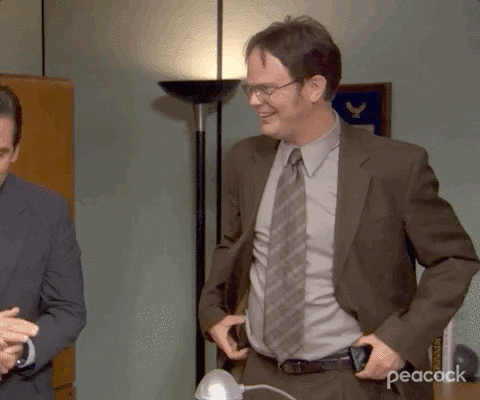How To Get Faster Bar Speed For Snatch
What does it mean to move the bar fast? What does that even entail?!?
There are a few key concepts we need to look at. To begin, we need to have the bar really, really tight off the floor. So if the bar is really tight off the floor and it goes into no man’s land, which begins right below the knee. As the bar gets to that point, it has to be in a really good position. There are a lot of lifters who will pull very, very slow to the knee. Then as the bar gets past the knee, their knees will then come under and the lifter will have a very explosive finish to help them move the bar very quickly. So the bar might initially accelerate slowly to the knees and as it gets into the reciprocation point, just above the knees, with the hips then coming into the bar and then nearly simultaneously extending the knees, the bar moves lighting fast.

Think of videos of Naim Suleymanoglu cleaning ridiculous weight. The speed under the bar is flash-like. Or even videos of Ilya Ilyin snatching from two blocks and how quickly he is finishing and getting back in that catch position. There are other examples. The fastest appear as if frames are being skipped. We watch the video footage and the bar is from the hip and the lifter is in the catch position as if there are no frames in the video.
Moving the bar quickly means getting the bar into a very good position at the knee, and as it gets past the knee, all the acceleration, all the crazy speed, comes from the hip into the catch. This is the movement that makes for that fast bar speed.
Having control of speed is the most important aspect of weightlifting. To have control means having solid technique.
1. Understand The Snatch Technique
If we don’t understand the technique of the snatch none of this stuff we are sharing can be applied.
With that being said, as the bar comes off the floor we want to see the knees clear back. The knees clearing back lengthen the hamstrings and create a stretch-shortening cycle. The hamstrings have a lot of fast-twitch muscle fibers, which will contribute to that speed. The bar comes over the knees and as it comes over the knees, the knees will come under and we start to engage our hips more, extending the hips (quick aside: a lot of people believe the hips are the last means of acceleration; that is a misnomer, the hips come under and then the knees extend). So the hips come under and then we extend through the knees into a strong upper body position.
The key concept here is that the bar and body need to be in excellent positions to be fast. Keep the bar tight as well. The first big takeaway from this technique mindset to improve bar speed is to make sure the bar is in a perfect position just below the knee or right at the knee cap. Watch the legends and how they come back with the knees and the knees would be vertical right above the heels. The bar almost looks like it is going very, very slow, but the bar is in perfect position. A bar in perfect position is easier to accelerate and hammer the lift.
Remember, the hamstrings play a key component in accelerating the bar speed.
2. Pause Above The Knee / Pause Below The Knee Snatch
With the bar nice and tight off the floor. We are in good positions. We now want to think about the lift sounding like zippering up a jacket. zzzzzZZZZZIIIIPPPPp!!!!

When we get the bar to the knee, we want to come over the knee and keep it tight. If the bar is tight we can be in a good position. Just think of Ilya snatching 205 kilos off of two boxes. So if we can get the bar around the knees in a tight position and then into the hips with the hips just about fully extended, we can go hips, knees, upper body. This happens very, very quickly. Thankfully we have a little warm-up we at Garage Strength use.
The exercise we use is the pause below the knee, pause above the knee snatch. The whole body, upper and lower, needs to be active during the entirety of the movement. The pauses hammer home the positions we need to be in to really accelerate the bar.
This helps the body learn the positions to keep the bar tight to apply a lot of force in a very short period of time. We are now going to speak about three different movements that can be used to ingrain, and over time, improve bar speed to hit massive PR’s.
3. Chun Snatch
We took this first movement directly from Kuo. The movement is essentially a muscle snatch where plantar flexion in the ankles and feet is held with a big upper body. The reason this movement helps improve the speed of the snatch is that this movement teaches the body in a slow pattern what the knees need to do, but it is also going to train the upper body. The upper body after making contact, we shrug and rotate. Now in a full snatch after contact, we think of shrug, rotate, and under.

As we shrug, rotate, we can think about punching up or pulling under. These are all great cues. Using the right movement to trigger that feeling allows the cues to be used in a stronger modality because we now know the feeling of what the cues feel like.
Performing the movement, it is key to hold the plantar flexion for a solid, legit two count. In addition to the hold being active overhead, we need to keep the bar extremely tight and close to the body. Now if the bar is forward, we will walk forward. If the bar is behind, we will walk backward. Don’t walk!
4. High Hang No Feet Power Snatch / High Hang No Feet Snatch
The Chun snatch is a bottom-up movement. The high hang no feet power snatchis a top-down movement.
We want to lower the bar eccentrically from the hip. We want the knees to come forward as we lower. We don’t want a stiff-legged high hang. The knees coming forward will teach the body how to feel the hamstrings lengthen with hip flexion, dorsiflexion in the ankles, and knee flexion. Then the hips come under and we finish with the upper body. Since it is a no-foot movement, our feet stay in contact with the ground–it is okay to plantarflex, just keep the foot attached to the ground in some manner throughout. Because our feet are in a no-foot position, we pull from the catch position.

We do the power version to feel the big, rapid upper body. We then follow this up with a full version of the variation to feel the big, rapid drop into the hole.
One thing with no foot movements is that it gives us more connected to the bar. Being grounded longer allows us to apply force for a longer amount of time. In addition, the sooner we are grounded in the catch position the sooner we can apply a force back vertically. A key cue here is to think about the snatch as a flat-footed jump.
With all that being said, this variation of the snatch is really, really good at creating better tension and connection with the bar which leads to greater speed.
5. Slow Snatch
Instead of pulling from the ground to just past the knee at the speed used during lifting on the competition platform, we want to pull with a deliberately slow downed tempo. Once the bar is above the knee, accelerate as normal. The slow position is from the floor to just past the knee. This lets us feel the tightness of the bar positioning. And again, when we are in a better position we can accelerate the bar faster.

Another benefit of the slow pull off the floor drastically increases overall strength from the floor to the knee. It also dramatically improves bar positions. The slow snatch will make the upper body feel more active right off the floor position as well.
Recap
We gave a solid warm-up movement: pause below the knee, pause above the knee. This warm-up will get the body tuned up. From there, we have a buffet menu of three snatch variationsthat can be utilized throughout the training to improve speed under the bar: the Chun snatch, the high hang no foot power snatch and full snatch, and the slow snatch. All three movements provide solid technical grounding. All three movements also create neurological noise within the body by complicating the movement. This complication of the movement leads to greater kinesthetic awareness but, and more importantly, allows for the signals within the body to travel faster and with more expediency for a greater neurological drive.
DANE MILLER
Dane Miller is the owner and founder of Garage Strength Sports Performance. He works with a select handful of clients on building comprehensive programs for fitness and nutrition. Several times a year he leads a workshop for coaches, trainers, and fitness enthusiasts.



